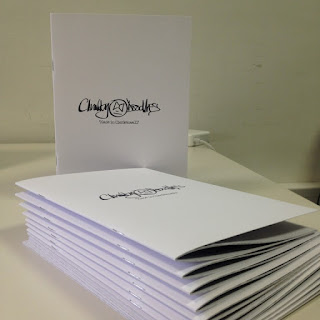After researching hand books and newspapers that have a similar audience/cost/content to the book that I am producing, they all used different binding methods. This lead to the binding method research so that the most appropriate method could be determined.
Kettle Stitch - This binding style allows the pages to lie flat which would benefit the book as it would allow the reader to view the double pages together rather than having to hold one down and then the other. This reflects how a person holds a book in their hands. However, this method is only effective with a larger number of pages therefore is not as appropriate as other methods for the book.
Perfect Binding - This binding method is one of the most popular methods to use in book design. Although the method is more effective for books with over 64 pages it can also be used with around 12, depending on the thickness of the stock. Once the pages have been glued together a thick card cover is attached to the spine or a double page can be wrapped around the glued pages. The book is then trimmed which ensures that the edges provide an equal finish. In terms of how the book is opened, a larger margin is needed so that no content is lost in the fold of each page however, the book is more likely to lie flat if the spine has been 'broken in'.
Saddle Stitch - Pages are folded, creased and stapled together. This type of binding is typically used for lookbooks, booklets, and magazines that have a smaller page count. It is a cheap and efficient method of binding pages together as it only requires the use of one machine. The margin used with a saddle stitch book needs to be tested depending on the stock as this can alter how well each page folds.
Pamphlet Binding - This binding methods uses a single section which is sewn with a running stitch down the spine; often an alternative to saddle stitching. This is a more creative way of using a simple bind. The visual appearance of the bind is also more appealing as it adds detail to the spine. Although this method is an alternative of saddle stitching, it takes more time to complete and uses more equipment.


No comments:
Post a Comment